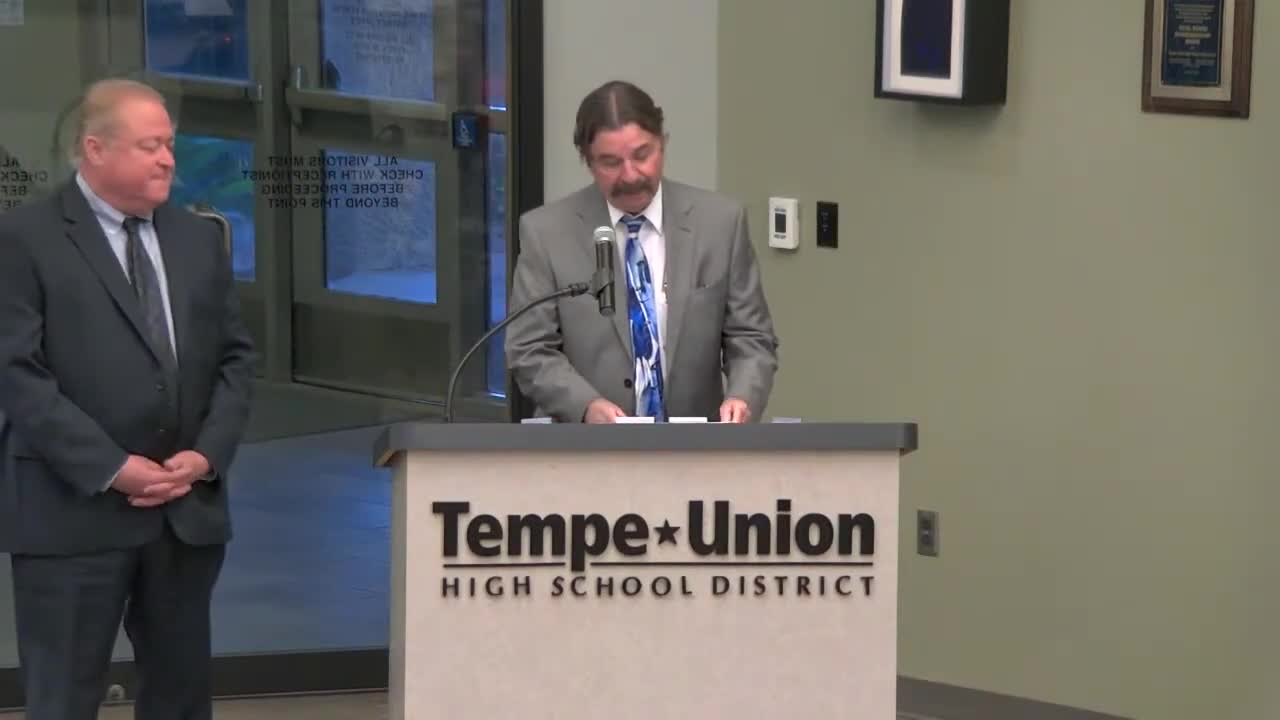Tempe housing development shows 90% multifamily units near ASU and downtown
April 18, 2024 | Tempe Union High School District (4287), School Districts, Arizona

This article was created by AI summarizing key points discussed. AI makes mistakes, so for full details and context, please refer to the video of the full meeting. Please report any errors so we can fix them. Report an error »

The Tempe Union High School District (TUHSD) Governing Board convened on April 17, 2024, to discuss significant developments in housing trends within the district, highlighting the ongoing shift towards multifamily housing and its implications for the community and local schools.
During the meeting, officials presented data indicating that approximately 90% of the 15,000 housing units permitted in the last decade were multifamily, primarily concentrated in the northern half of the district, particularly around the downtown Arizona State University (ASU) area. In contrast, single-family homes accounted for only about 10% of the growth, with most of these developments occurring in the southern half of the district.
The discussion emphasized the rapid redevelopment of existing structures, such as hotels and shopping centers, into residential units. This trend is expected to continue, with projections indicating that 95% of future housing developments will also be multifamily. Notably, the Upper Canyon project, set to begin construction this summer, is anticipated to add significant single-family housing, with the first closings expected by late 2025 or early 2026. This project, developed by Blandford Homes in collaboration with other builders, aims to create a mix of single-family homes, duplexes, and rental units.
However, the board acknowledged the challenges associated with this growth. While the influx of new housing can enhance community development, it also raises concerns about gentrification and the displacement of existing residents. As housing prices rise, affordable options diminish, potentially leading to a decrease in the school-age population. This phenomenon has been observed in other areas, such as around Grand Canyon University, where rising rents have pushed out families.
The meeting underscored the importance of understanding the demographic shifts resulting from these housing trends. Officials noted that while multifamily units contribute to overall housing numbers, they typically attract fewer school-age children compared to single-family homes. This demographic insight is crucial for planning educational resources and anticipating future needs within the district.
In conclusion, the TUHSD Governing Board's discussions reflect a broader trend in urban development that prioritizes multifamily housing. As the district navigates these changes, it faces the dual challenge of fostering growth while ensuring that the needs of all community members, particularly families with children, are met. The board's ongoing analysis of housing impacts will be vital in shaping future educational strategies and community support initiatives.
During the meeting, officials presented data indicating that approximately 90% of the 15,000 housing units permitted in the last decade were multifamily, primarily concentrated in the northern half of the district, particularly around the downtown Arizona State University (ASU) area. In contrast, single-family homes accounted for only about 10% of the growth, with most of these developments occurring in the southern half of the district.
The discussion emphasized the rapid redevelopment of existing structures, such as hotels and shopping centers, into residential units. This trend is expected to continue, with projections indicating that 95% of future housing developments will also be multifamily. Notably, the Upper Canyon project, set to begin construction this summer, is anticipated to add significant single-family housing, with the first closings expected by late 2025 or early 2026. This project, developed by Blandford Homes in collaboration with other builders, aims to create a mix of single-family homes, duplexes, and rental units.
However, the board acknowledged the challenges associated with this growth. While the influx of new housing can enhance community development, it also raises concerns about gentrification and the displacement of existing residents. As housing prices rise, affordable options diminish, potentially leading to a decrease in the school-age population. This phenomenon has been observed in other areas, such as around Grand Canyon University, where rising rents have pushed out families.
The meeting underscored the importance of understanding the demographic shifts resulting from these housing trends. Officials noted that while multifamily units contribute to overall housing numbers, they typically attract fewer school-age children compared to single-family homes. This demographic insight is crucial for planning educational resources and anticipating future needs within the district.
In conclusion, the TUHSD Governing Board's discussions reflect a broader trend in urban development that prioritizes multifamily housing. As the district navigates these changes, it faces the dual challenge of fostering growth while ensuring that the needs of all community members, particularly families with children, are met. The board's ongoing analysis of housing impacts will be vital in shaping future educational strategies and community support initiatives.
View full meeting
This article is based on a recent meeting—watch the full video and explore the complete transcript for deeper insights into the discussion.
View full meeting
